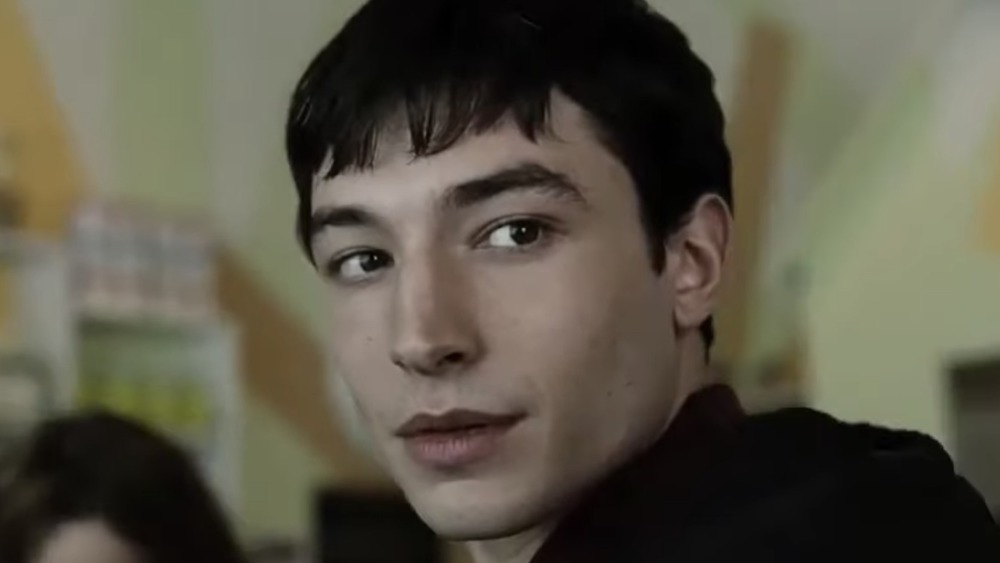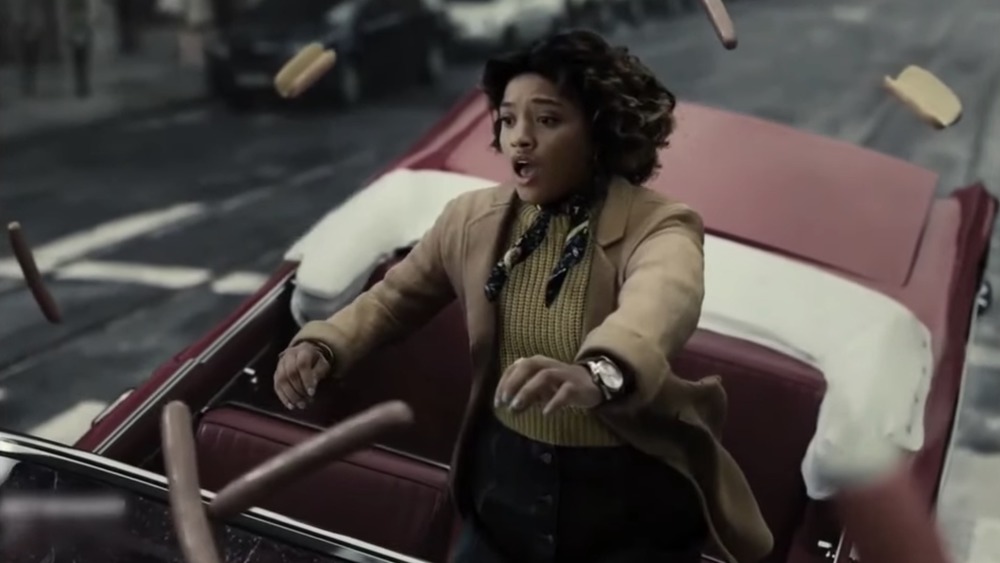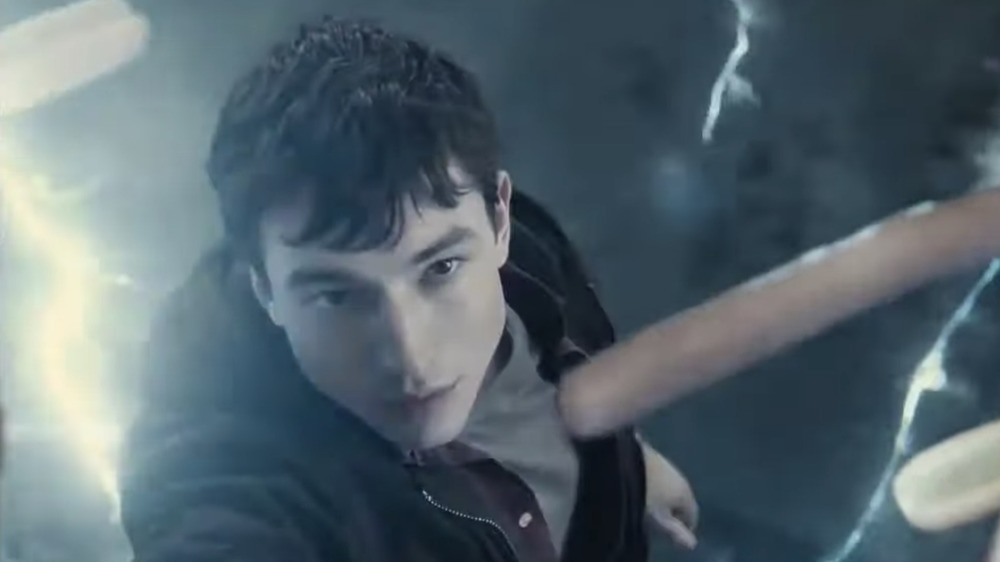What The Snyder Cut Gets Wrong About The Hot Dog Scene, According To A Physics Expert
If you click a link and buy a product or service from a merchant, we may be paid an affiliate commission.
You know the hot dog scene in Zack Snyder's Justice League – the one in which Barry Allen (Ezra Miller) saves Iris West (Kiersey Clemons) from a horrific car accident as if he has all the time in the world? It happens early on as an introduction to The Flash's powers, when a truck driver trying to reach a dropped hamburger hits a hot dog cart and then Iris' car flips, throwing her out of it. With his super-speed, Barry is able to divert a hot dog and save the girl in no time flat.
Cinematically, the scene is interesting, with elements of humor as well as poignancy, yet it has gotten mixed reception from audiences. CBR called it creepy, a scene that "deserved to be cut," as it shows him spending long moments (to him) looking at Iris without her consent — and it also shows her staring at him when she should be watching the road. However, it's an important moment in DCEU canon, as Iris is a big part of Barry's story, and the moving music and the slow-motion action both create an atmosphere that sets a specific tone for the four-hour HBO Max epic.
But is it factually correct? Well, maybe that wasn't the most important thing on Snyder's list when it came to portraying the results of a superhero's powers. Here's the scoop on that hot dog scene, according to an expert.
All that debris flying around is accurately depicted, actually
The scene in question features some major impacts, sending plenty of debris all over the city street when the truck makes contact. Dr. Jed Macosko, Professor of Physics at Wake Forest University, spoke to Looper about the realism of this debris. In this particular part of the scene, he calls the slow-motion action here a "plus."
He noted, "The explosive destruction of a horrible car wreck becomes a glorious dance of objects whose distance above ground effortlessly changes according to a simple equation: y = v•t + 0.5•g•t^2. Getting to see the flying umbrella, sesame seed, buns, and hotdogs execute their motion perfectly is a sight to behold!"
Macosko is referring here to the equation that governs the displacement for launched projectiles, in which "y" is equivalent to vertical displacement, "v" refers to velocity, "t" refers to time, and "g" refers to the force of gravity — a constant, at -9.8 meters per second squared. Let's just say, as Macosko did, that this results in "graceful parabolic arcs of every possible shard of glass and flying hotdog stand accoutrement."
But that hot dog could never have remained intact
However, not everything here is kosher. As you will recall, Barry has time to stop a hot dog, plucking it out of the air with a gentle touch. Macosko says this could not happen the way it appeared in the film: Think Isaac Newton's Laws of Motion. Newton's first law states that an object at rest or in motion will stay that way unless acted upon by an outside force. In this case, the hot dog is the object in motion. "It helps to remember that 'a hotdog in motion tends to stay in motion unless all eight inches of it are acted on by an external force,'" the physicist said. Grabbing it in the middle, as Barry did, would not save it.
"In actuality, the ends of the hotdog would, thanks to inertia, keep traveling the same direction while the middle, grasped firmly in Barry's thumb and two fingers, would be pulled in the new direction," Macosko said. "The result would most certainly be a broken hotdog, not the beautifully-intact dog treat that Barry later pulls out of his pocket to a canine-related interview he would have otherwise bombed."
Of course, Barry uses pretty much the same move to good effect several times later in the Snyder cut of Justice League without destroying anything, so you could argue there's some superhero pseudoscience going on here that allows him to manipulate objects in super-speed while breaking the real-life laws of science, but that would be stretching it a bit. Then again, if your imagination can encompass gods, Amazons, and superheroes, maybe you can justify this, too.


